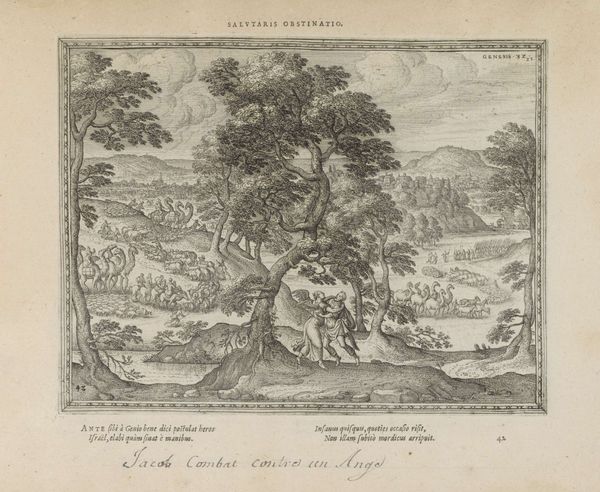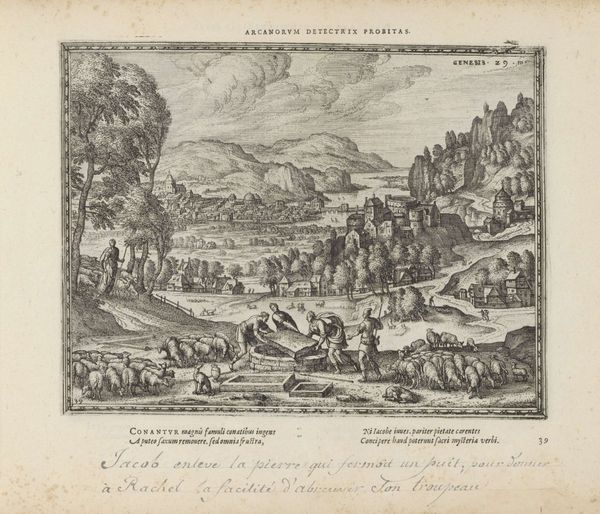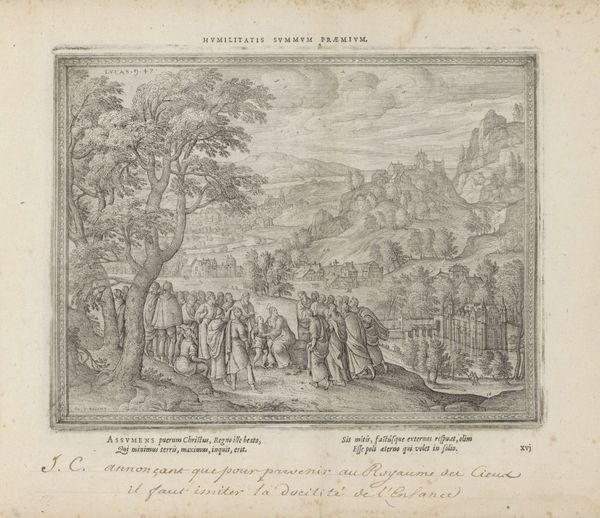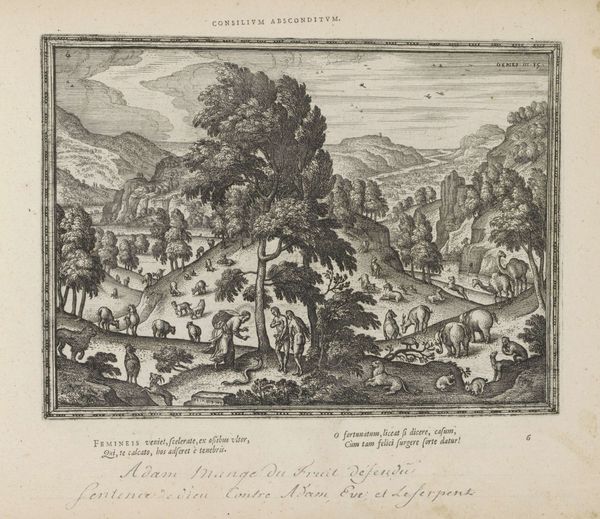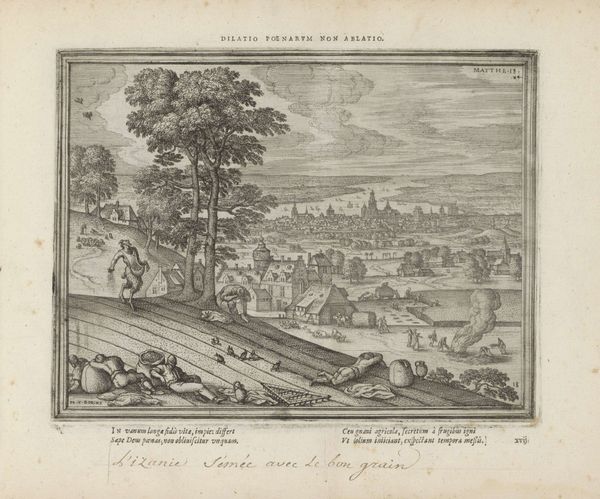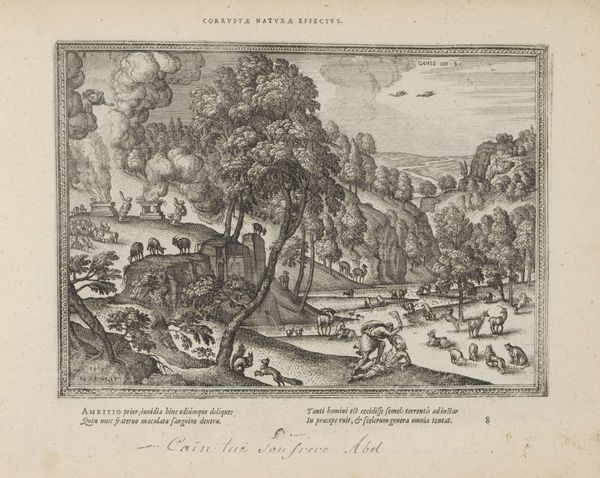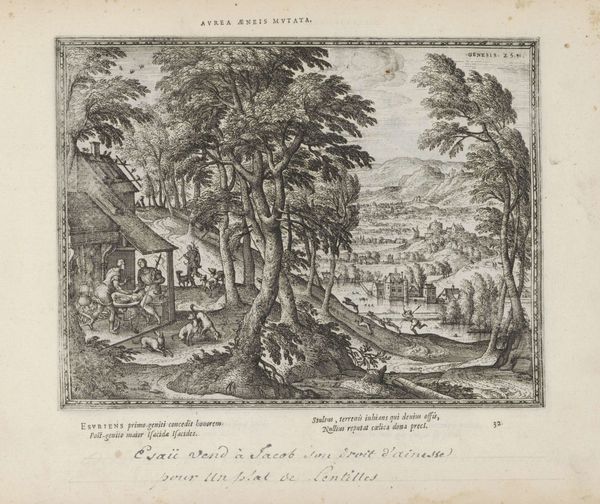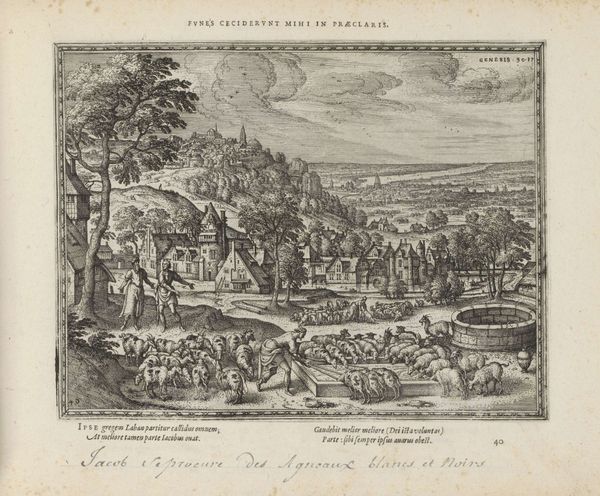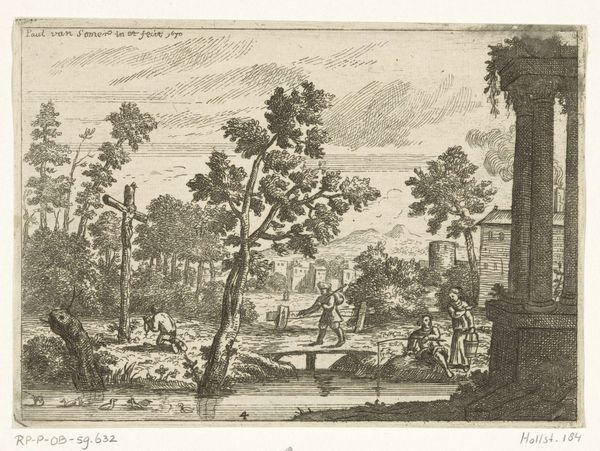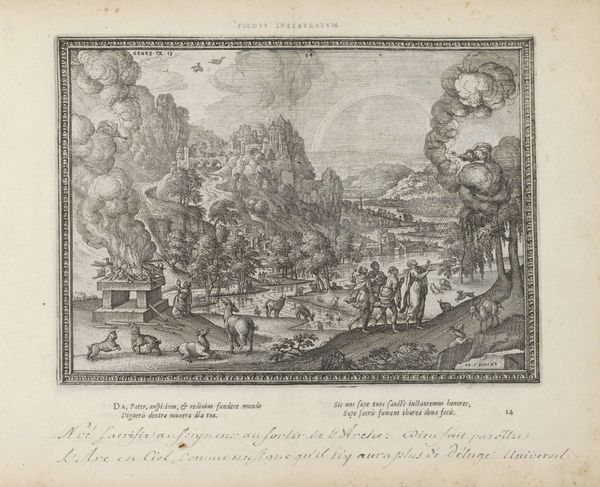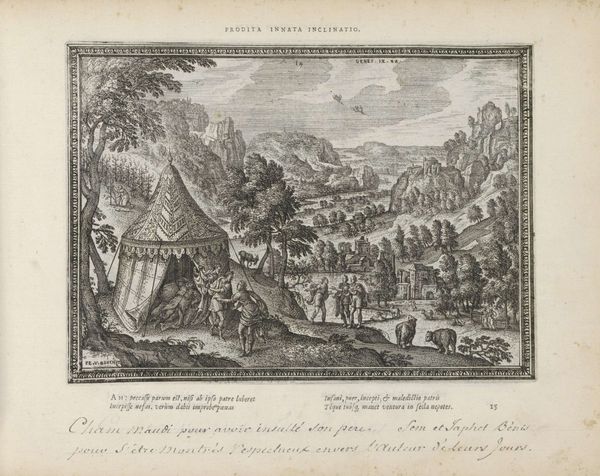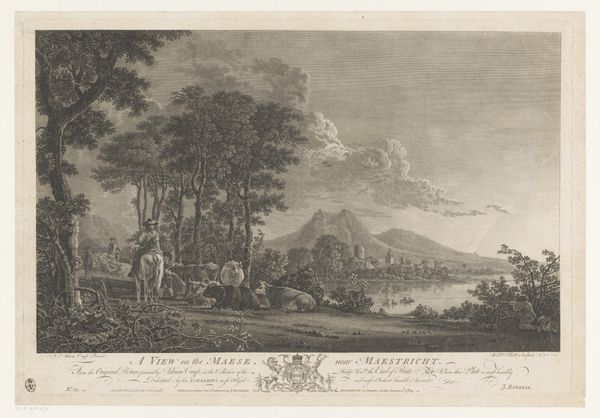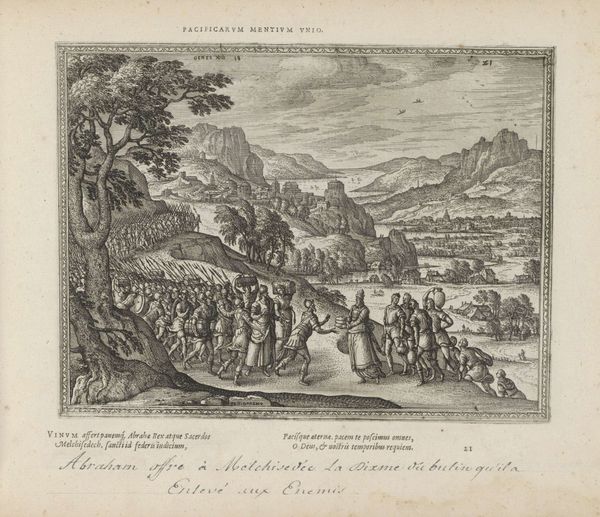
print, engraving
#
medieval
# print
#
landscape
#
11_renaissance
#
northern-renaissance
#
engraving
Dimensions: height 186 mm, width 243 mm
Copyright: Rijks Museum: Open Domain
Editor: "Ezra Eating Flowers in the Field" is a print, an engraving, by Pieter van der Borcht the First, dating from somewhere between 1582 and 1613. It's currently housed at the Rijksmuseum. The figures seem almost incidental against this broad landscape; I'm struck by the contrast between the minute detail of the foreground and the expansive, almost dreamlike quality of the background. What draws your eye when you look at it? Curator: The dreamlike quality you mention speaks to its socio-political context. Look closely at the tiny figures. These are visual strategies to depict devotion and escape, common motifs in Northern Renaissance art. This image, ostensibly of Ezra, functions within a larger visual culture emphasizing piety and retreat from the world. Editor: Retreat? Do you mean physical retreat, or something more symbolic? Curator: Both! The landscape isn't merely a backdrop; it is integral to the message. Note the composition: the figures are small, almost overwhelmed by nature. The fine lines create an abundance of natural detail that's heightened by the spatial depth. This promotes an idea prevalent at the time - piety occurs through experiencing divine creation and the humbling smallness of humanity. The landscape becomes a space for solitary reflection. The figure's placement underscores this public message, highlighting the politics embedded in such imagery. Editor: I see what you mean. So, even though it's about a biblical figure, it’s less about religious doctrine and more about projecting values about society. Curator: Exactly! And about instructing the public, perhaps encouraging withdrawal from growing urban spaces to renew their devotion in nature. Consider the institutional role too; this was produced as a print, for wide distribution. It brought those values to homes and personal spaces, actively shaping how people interacted with faith and the world around them. Editor: That's fascinating! I hadn't thought about how the print format itself contributes to its message. Curator: These pieces aren't just illustrations; they are objects participating in constructing culture. Understanding them demands looking at that historical role.
Comments
No comments
Be the first to comment and join the conversation on the ultimate creative platform.
